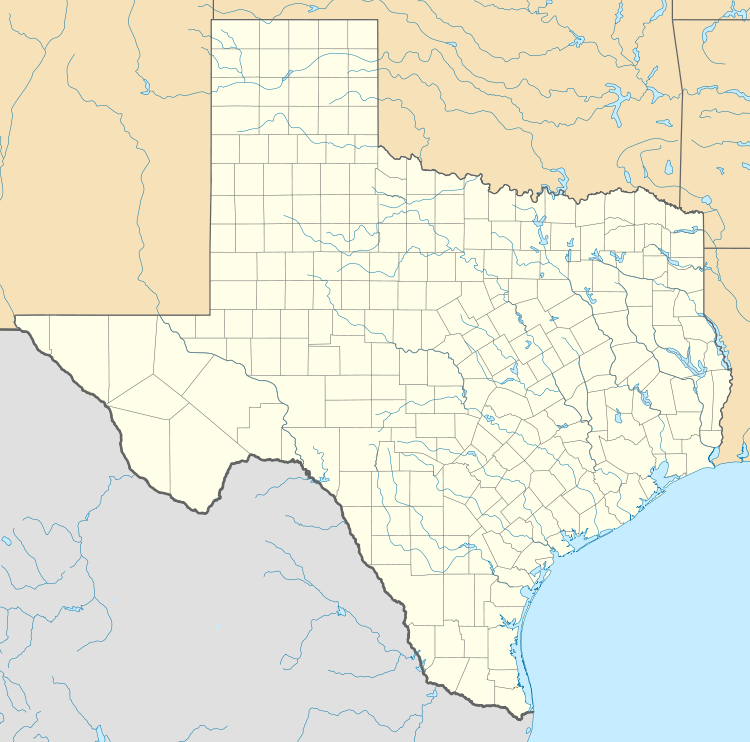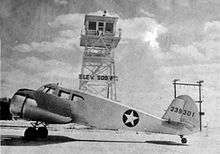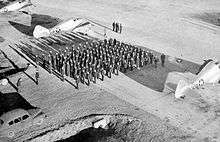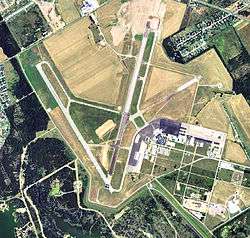Waco Regional Airport
| Waco Regional Airport Blackland AAF | |||||||||||||||
|---|---|---|---|---|---|---|---|---|---|---|---|---|---|---|---|
|
2008 USGS airphoto | |||||||||||||||
| IATA: ACT – ICAO: KACT – FAA LID: ACT | |||||||||||||||
| Summary | |||||||||||||||
| Airport type | Public | ||||||||||||||
| Owner | City of Waco | ||||||||||||||
| Serves | Waco, Texas | ||||||||||||||
| Elevation AMSL | 516 ft / 157 m | ||||||||||||||
| Coordinates | 31°36′41″N 097°13′50″W / 31.61139°N 97.23056°WCoordinates: 31°36′41″N 097°13′50″W / 31.61139°N 97.23056°W | ||||||||||||||
| Website | waco-texas.com/airport/... | ||||||||||||||
| Map | |||||||||||||||
 KACT Location | |||||||||||||||
| Runways | |||||||||||||||
| |||||||||||||||
| Statistics (2006) | |||||||||||||||
| |||||||||||||||
Waco Regional Airport (IATA: ACT, ICAO: KACT, FAA LID: ACT) is five miles northwest of Waco, in McLennan County, Texas. It is owned by the City of Waco.[1]
The airport is a 20-25 minute drive to Downtown Waco and the Baylor University Campus. The airport is largely used by athletic teams visiting the Baylor campus.
Facilities
Waco Regional Airport covers 1,369 acres (554 ha) and has two asphalt runways: 1/19 is 6,596 x 150 ft (2,010 x 46 m) and 14/32 is 5,896 x 150 ft (1,797 x 46 m).[1]
In 2006 the airport had 36,011 aircraft operations, average 98 per day: 65% general aviation, 27% air taxi, 8% military and 1% airline. 100 aircraft are based at the airport: 53% single-engine, 38% multi-engine, 6% jet and 3% helicopter.[1]
The airport is planning an expansion: three jetways and a larger lobby area and holding room. There is no wireless access; it is planned in the expansion.
Airlines and destinations
| Airlines | Destinations |
|---|---|
| American Eagle | Dallas/Fort Worth |
History



Waco Regional Airport's history begins in 1941 when some grazing farmland for livestock was chosen for the site of the new Waco Municipal Airport. Construction was begun in the late summer of 1941, just prior to the United States' entry into World War II.[2]
In early 1942 the War Department leased the site and it was provided to the United States Army Air Forces for a training airfield. At the time, construction consisted of three runways partially completed. The Army Air Force brought in construction crews and began to rush the project to completion and changed the civil building plans to that of a military airfield and ground station. Barracks, mess halls, a hospital, church, theater, administrative buildings, aircraft hangars and a control tower were built. The facility was initially named China Springs Army Air Field and later Waco Army Air Field No. 2 before being renamed Blackland Army Airfield after the local black soil.[2]
Blackland AAF was activated on 2 July 1942, initially being a glider training school. The AAF brought a nucleus of experienced airmen from other airfields in the AAF Gulf Coast Training Center, and then civilian specialists were recruited from around the United States to supplement the military garrison. The civilian workers were instructed in Army aviation procedures and to fill hundreds of jobs necessary to support the pilot training program.[2]
In October 1942 the Army Air Force Pilot School (Advanced Twin-Engine) was activated (phase 3 pilot training). On 8 January 1943, the War Department constituted and activated the 33d Flying Training Wing (Advanced Twin-Engine) at Blackland and assigned it to the AAF Central Flying Training Command. The school used a number of two-engine trainers, including the Cessna AT-17 Bobcat, Curtiss-Wright AT-9, Beechcraft AT-10 Wichita, and TB-25 Mitchell.[2]
The school's mission was to train cadets to fly twin-engine transports and bombers in a nine-week course. During training flight training was combined with ground school classes including radio navigation, aircraft and naval identification, armament, photo interpretation, weather forecasting and other courses. Several hours of instruction were taught in the ground-based Link Trainers. Pilot wings were awarded upon graduation and were sent on to group combat training by First, Second, Third or Fourth Air Force. Graduates were usually graded as Flight Officers (Warrant Officers); cadets who graduated at the top of their class were graded as Second Lieutenants.[2]
Flying training at the airfield ended on 4 February 1945 and it became a sub-base of Waco Army Airfield. The field became inactive on October 31, 1945. By 1950 the facility was disposed of by the War Assets Administration (WAA) and deeded to the local government, being operated as Waco Municipal Airport. Some buildings were used as a public housing project.
Airline flights began in the 1940s; in 1957 Braniff, Continental and Trans-Texas all stopped there. BN and CO pulled out in 1962.
See also
References
![]() This article incorporates public domain material from the Air Force Historical Research Agency website http://www.afhra.af.mil/.
This article incorporates public domain material from the Air Force Historical Research Agency website http://www.afhra.af.mil/.
- Shaw, Frederick J. (2004), Locating Air Force Base Sites History’s Legacy, Air Force History and Museums Program, United States Air Force, Washington DC, 2004.
External links
| Wikimedia Commons has media related to Blackland Army Air Field. |
- Waco Regional Airport, official site
- Resources for this airport:
- AirNav airport information for KACT
- ASN accident history for ACT
- FlightAware airport information and live flight tracker
- NOAA/NWS latest weather observations
- SkyVector aeronautical chart for KACT
- FAA current ACT delay information

